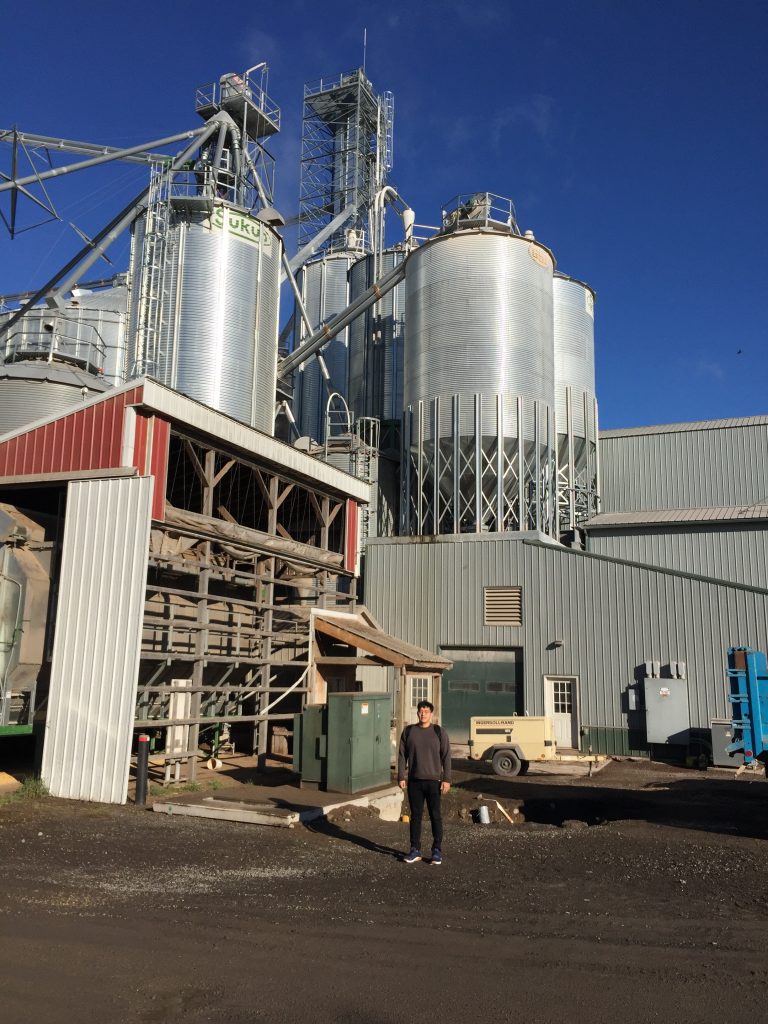Dr. David Bullock and graduate student Jaeseok Hwang went to New York to meet with Margaret Krause and Dr. Michael Goore of Cornell University and the Advanced Ag Alliance, a non-profit organization in New York dedicated to running on-farm whole-field agronomic trials with participating farmers. DIFM and the Ag Alliance agreed that DIFM would analyze and report on data from their experiments between 2015-2018, and will design approximately 20 trials for the Advanced Ag Alliance in 2019. These trials will focus on seed rate and seed variety. In return, they will provide funding for a grad student research assistant’s tuition and salary.

Jaeseok Hwang and Margaret Krause, meeting at Cornell University, to discuss Advanced Ag Alliance trials.
Following this, Bullock and Hwang went to Auburn, New York, to meet with farmer Todd DuMond. DuMond was the principal driver behind the Ag Alliance’s on-farm research project. DuMond has a BS and MS in Engineering from MIT, and is passionate about Data-Intensive Farm Management. They discussed field trial details.

DIFM grad student Jaeseok Hwang will conduct the statistical and economic analyses for the DIFM/Advanced Ag Alliance field trials in New York state. Here, Jae is shown at the farm of farmer Todd DuMond, who founded the AAA.


